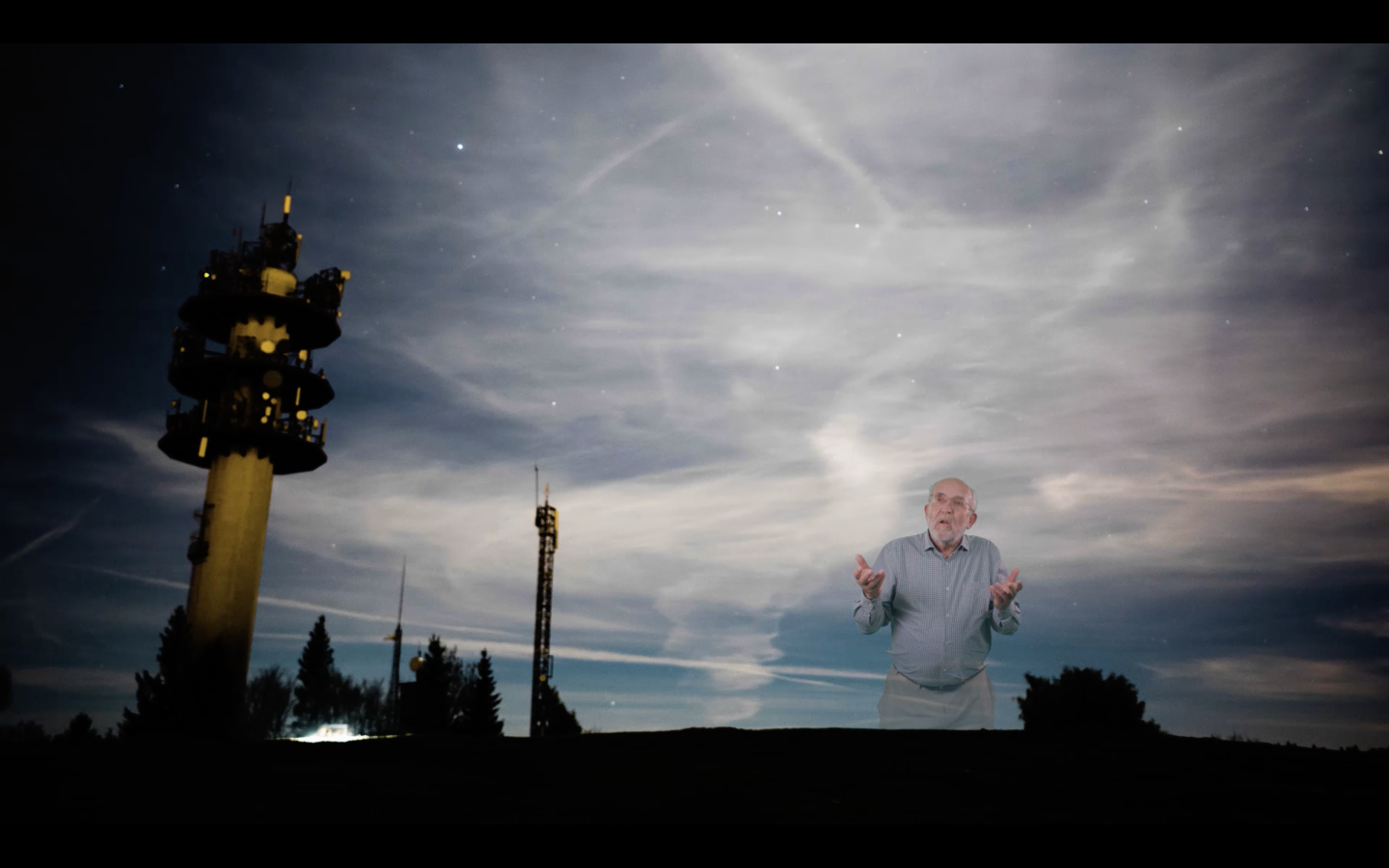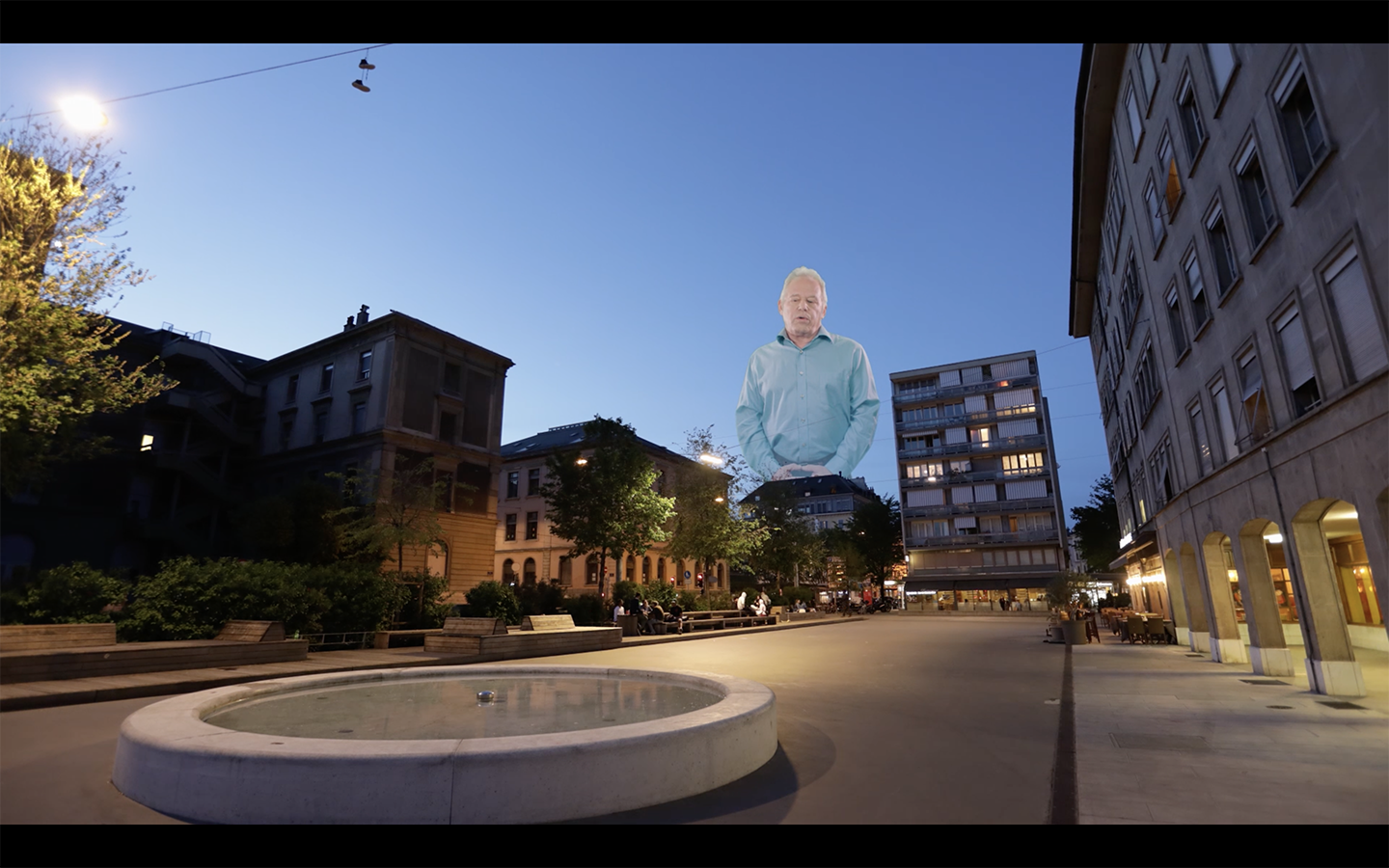Film, books, website
Reading the Light is a space offering complementary insights into scientific and cultural approaches to chronobiology through a documentary, scientific and artists’ books and a website.

Image courtesy of Muséum de Genève.

Image courtesy of Muséum de Genève.
Lovely is the Night
2018
Natural History Museum of Geneva
Documentary film, 11:40 minutes.
Project managers: Hervé Groscarret, Pascal Moeschler, Natural History Museum of Geneva. Film direction: Romain Girard, Point prod. Film production: Marie Carrard, Point prod.
The short documentary film Lovely is the Night (La nuit est belle) was produced as part of the exhibition and event of the same name, in which the Natural History Museum of Geneva and the Science History Museum of Geneva took part in 2018.
Five personalities share their expertise on the impact of light pollution: Michel Mayor (astrophysicist), Howard Cooper (chronobiologist), Eric Achkar (astronomer), Luc Barthassat (politician) and Xavier Pin (mayor). The video was shot in five locations around Geneva (city-centre, local village, lake-side, from the Salève mountain and from the observatory) over the same night of 26 April as a time-lapse, offering the viewer a visual understanding of the varying impact of light pollution.
The local event La nuit est belle first started in the Geneva area before gradually spreading to other parts of Switzerland and France. Since then, every year on the same night, villages and towns switch off their streetlights to enjoy and marvel at the beauty of the night. This action aims to combat light pollution and its harmful effects on health and biodiversity. Activities such as stargazing and lectures are also organised on this occasion.
This year, the event will take place on 22 September 2023 and will focus on the topics of health, inclusiveness and safety.
Center for Environmental Therapeutics
1994
Michael Terman, Anna Wirz-Justice
Estudio Manila, Wayaweb (Mexico).
Non-profit website for information about circadian rhythms, sleep, depression, and light therapy.
The Center for Environmental Therapeutics is a science-based service and resource for the public and professionals addressing the neglected properties of light, dark, and air to meet the challenges of mental and physical health in contemporary life.
Some resources include:
• Self-assessments for chronotype, seasonality, depression;
• Circadian rhythms and sleep regulation guidance;
• Light therapy, melatonin, and ionised air: latest news from researchers and clinicians with practical guidance;
• A vast library of questions posed by visitors along with answers from experts in the field.
Reading the Light (books selection)
Various authors
Art books, scientific monographs
The reading space invites visitors for further enlightenment in the science of chronobiology and the artworks this science has inspired. A selection of books proposed by the curators as well as some artists of Lighten Up! are available for browsing.
- Scientific Books
• Changing Perspectives on Daylight: Science, Technology, and Culture, Science / AAAS, Washington, DC, 2017.
• Chasing the Sun, by Linda Geddes
• Circadian Rhythms: A Very Short Introduction, by Russell G. Foster & Leon Kreitzman
• Enlighten Your Clock: How Your Body Tells Time, by Coline Weinzaepflen
• Findings on Light, curated and edited by Hester Aardse & Astrid Alben
• Internal Time, by Till Roenneberg
• Life Time: Your Body Clocks and its Essential Roles in Good Health and Sleep, by Russell G. Foster
• Sleep: A Very Short Introduction, by Steven W. Lockley & Russell G. Foster
• Winter Blues Survival Guide, by Norman E. Rosenthal & Christine M. Benton
- Artists’ books
(in order of appearance of the artists’ installation in the exhibition)
• Beyond Surface Appeal: Literalism, Sensibilities, and Constituencies in the Work of James Carpenter, by Sarah Whiting
• James Carpenter: Environmental Refractions, by Sandro Marpillero
• Conversātiō: In the Company of Bees, by Anne Noble
• Susan Morris: Self Moderation, exhibition catalogue, Centre d’art Pasquart, Biel, by Briony Fer, Felicity Lunn, Sadie Plant
• Susan Morris: Marking Time, by
Margaret Iversen
• A Day’s Work, curated by Susan Morris
• The Gorgeous Nothings, curated by Susan Morris
• Andreas Horlitz: Arbeiten — Works, by Klaus Honnef, Irene Netta, Sibylle Omlin, Hans Scheurer, Stephan Trescher
• Annual Dynamics of Daylight Variability and Contrast: A Simulation-Based Approach to Quantifying Visual Effects in Architecture, by Siobhan Rockcastle & Marilyne Andersen
• Liliane Lijn: Light and Memory, exhibition catalogue, Rocca di Umbertide, Centro per l’Arte Contemporanea, Perugia, edited by Linda Saunders
• Liliane Lijn: Works 1959–80, by David Mellor
• Uchronia: Designing Time (Board of International Research in Design),
by Helga Schmid
• Noir c’est noir, by Xavier Castille,
Pascal Moeschler, Eric Achkar
• The Hypothetical Cabinet of Phlogistronics, by Alan Bogana
• Step by Step, by Alan Bogana
• A Friendly Alien, by Dieter Bodner
(for Colin Fournier)
• Slow Light in the Wachau, by Siegrun Appelt
• Olafur Eliasson: Experience, by Olafur Eliasson, Anna Engberg-Pedersen, Michelle Kuo
• Olafur Eliasson: In Real Life, exhibition catalogue, Tate Modern, London, edited by Mark Godfrey